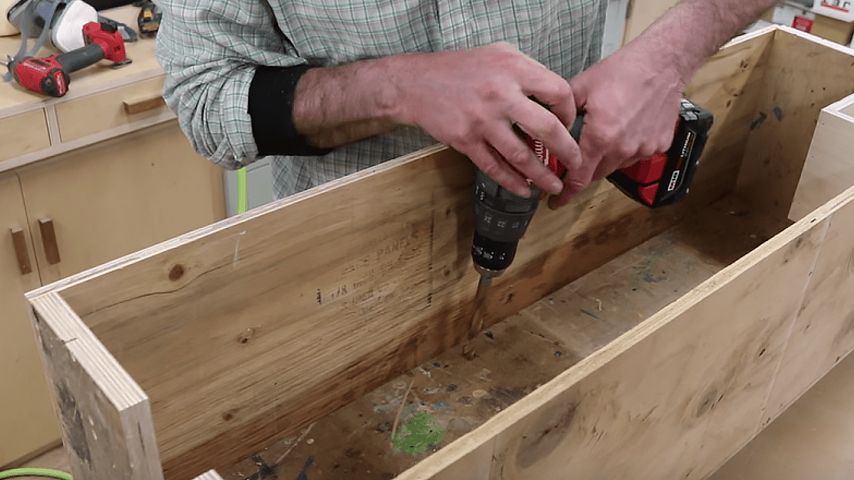How to Make Your Own Toolkit for Your 4-wheeler
Every ATV lover needs certain tools to maintain their machine. And you may want to DIY a tool box for your 4-wheeler just because you are passionate about making things yourself or because a custom box will best hold all the gear you need for the way you use your machine. This post will tell you what tools you need and how to make your own toolkit for your 4-wheeler.
What You Need in Your 4-wheeler Toolkit

A toolkit is only as good as the gear inside it. There are some things that everyone who owns a 4-wheeler needs, and some that will be specific to you.
Air compressor
You'll need this to fill your tires because they need frequent management, including when you get to your destination to make sure the elevation hasn't changed your tire pressure on you.
Tire pressure gauge
A tire pressure gauge is a must-have to determine that you need to fill your tires and to determine that you've filled them to the right pressure.
Tire plug repair kit
If you have a tire plug repair kit, you can fix a flat tire and be back on your 4-wheeler rather than trying to get someone who does have one to help you.
Wrenches
There are many nuts and bolts you need to check before and after every ride. A t-handle socket wrench set covers the many different sizes that will probably be present on your ATV, and if you bring it with you, you can address any mishaps that come up.
You'll also need allen wrenches for some of your 4-wheeler's parts.
An axle wrench is needed for the rear axle nut. You'll need it in the garage because this nut tends to work loose. It might be handy to bring along with you too. You'll need a ratchet extension bar to use that axle wrench, so purchase one at the same time.
Pliers
Pliers are just handy tools all-around, for jobs they're required for and as emergency stand-ins for other tools.
Screwdrivers
You can either bring multiple flathead and Phillips-head screwdrivers to tackle anything that may come up or keep it simple and purchase a multifunctional screwdriver to get it all in one tool.
Nuts & Bolts
Should you lose any of these, you'll be thankful to have extras on hand.
Tow strap
No matter how careful you are, breakdowns and crashes can still happen. In that event, you need to be prepared with a tow strap.
Spare belt
It's a good idea to bring a spare belt should something happen to yours while you're on an adventure or tackling a job.
Multimeter& test light
A multimeter and test light will help you diagnose electrical problems on your 4-wheeler so you can address them and be back in business.
Extras
Duct tape, zip ties, super glue, and epoxy are frequently listed items in 4-wheeler toolkits because they're good temporary fixes for various issues and they can serve as creative first aid.
Owner's manual
Bring a copy or put it in a waterproof bag and inside your waterproof toolbox if you like. Your machine has a lot of technical specifications that you'll need to be mindful of when making adjustments or repairs and they're all in that book.
Job specific tools
For farm work and various outdoor hobbies, you will likely have individual tool needs. A handsaw, chainsaw, hammer, nails, screws, hedge clippers, axe, or rope may be essential to you. Will you need any oils, wires, etc. to use the tools you bring?
How to Make Your Own Toolkit for Your 4-wheeler

You can purchase a storage box to place these items in, but you may prefer to may your own box for your toolkit.
Make a list of everything you'll need to have in your toolkit and consider how it will fit. How many compartments will you need? What size and shape might they need to be? Do you need to make holes in the toolbox to fit or allow access to certain tools? Design the box to fit the back or front of your 4-wheeler and to hold all the gear you need so you are prepared to work and know how much wood you need.
A good, strong plywood is needed to create a toolkit tough enough for your outdoor adventures and frequent use. Baltic birch is a strong plywood.
Cut the plywood to form the bottom, front, back, and sides of the box (and a top, depending on your needs). If you prefer, you can go ahead and cut the pieces to create your compartments on the side too.
If you need to cut holes in the box for awkward tool handles or access, it may be best to do that before putting the box together.
Attach the pieces together with wood glue and nails and then reinforce the joints with screws.
Drill holes in the bottom of the box to allow water to escape.
Strong hinges, a handle, a lock, and maybe some weatherproofing will be helpful if you need a top.
Paint your toolkit or leave it natural.








































